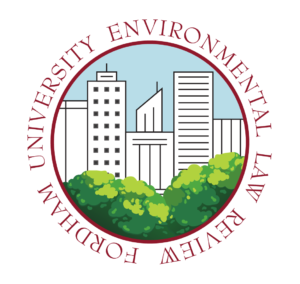Legalized Cannabis: A Potential Solution for Attacking Environmental Racism
Rachel Goldstein (she/her/hers)
Fordham ELR Staffer Class of 2024
Environmental racism is a form of systemic racism that occurs when exposure to health hazards disproportionately impacts communities of color. Examples include living near mines, landfills, major roads, or sewage. Due to a variety of legal, economic, and social barriers, low-income minorities often live in such areas where they are exposed to toxins and face the lethal consequences of that exposure. Black Americans specifically face higher infant mortality rates, heart disease, certain types of cancer, and HIV. They are even more likely to die younger than their white counterparts, with a life expectancy of 79.
Environmental racism is deeply connected to racial inequality resulting from the War on Drugs. Black Americans continue to experience the negative impacts of cannabis prohibition while largely remaining locked out of the benefits of the legalized cannabis market. In 2021, 73% of cannabis owners, employees, executives, and volunteers in Massachusetts were white, while 6% were black. In contrast, black people in Massachusetts remain four times more likely to be arrested for marijuana possession, even though marijuana is decriminalized and now legalized. In addition to the economic impact of cannabis prohibition, climate change has disproportionately impacted communities of color. These communities are more likely to experience the impact of climate change first and less likely than wealthier communities to recover from the economic damage caused by climate change. As cannabis production increases across the country, concerns about air quality, water usage and clarity, and pesticide usage have increased as well, particularly concerning how cannabis production will impact low-income communities of color.
Recognizing the connection between the cannabis industry’s disparate relationship with communities of color and climate change allows us to address the devastating impact that racism has had on the health, wealth, and well-being of poor racial minorities. States like Illinois and New York currently have cannabis law provisions that detail how to divert money from cannabis taxes and reinvest it in communities that were disproportionately impacted by cannabis prohibition in the first place. However, these current laws do not specify how to improve the environmental quality of these communities. Nevertheless, states can and should utilize these cannabis reinvestment funds to develop green infrastructure. These reinvestment funds should be used to improve air quality, capture rainwater runoff that contains toxic chemicals, and develop green recreational spaces like parks and gardens.
An additional solution to creating safer and greener spaces in low-income urban communities lies in the production and cultivation of cannabis itself. Alexis Mena is a co-founder of Universe City, a business that has a hydroponic farm currently producing food. Mena plans to utilize Universe City as a resource center for black-owned canna businesses, where they can use hydroponic farming to grow cannabis in New York City. While proponents argue that outdoor cannabis farms are far more sustainable and that indoor farming in urban areas can have a negative sustainable impact, Universe City’s operators seek to address those concerns. In fact, Mena plans to power Universe City’s growing operation with solar panels while reusing waste, water, and organic material to create a “closed-loop” growing system. Through these efforts, Mena and her peers are working towards generating a future where indoor cannabis farms can be a sustainable solution. By creating opportunities for sustainable indoor cannabis farms, communities in urban areas will have easier long-term access to the cannabis market.
As cannabis becomes legalized in more states across the country, cannabis cultivation, production, and legislation can be used to address the damages that environmental racism has caused communities of color by reinvesting in these communities to develop safer and greener neighborhoods.

